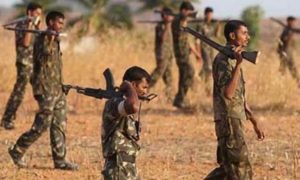History was creating a different crisis in a Budgam hamlet at a time when Muslims were being massacred in Jammu in Oct 1947. But once the mad orgy of violence thawed, the two migrations in one State met with two different fates.
The meditative outlook that Atuna wears betrays the very sense that this Budgam village was once the last battleground between the Pakistani irregulars and Hari Singh backed disgruntled refugees.
Nestled close to the Srinagar Airport, the village went up in flames in Oct 1947; saw its villagers migrating under the cover of dark night and take refuge in sweltering plains of Delhi where Saadut Hassan Manto’s partition characters were madly taking a form.
Since that crimson autumn of 1947, all these reminiscences have stayed afresh with Mastana Singh, the headman of Atuna — a Budgam village planted by walnut trees and overlooking the freshly harvested paddy fields. The vast fading green canopy makes Atuna a deep-seated forest hamlet housing some 35 Kashmiri Sikh families in a peaceful scattered settlement.
In his hushed courtyard, occasionally echoed with mooing cows and cawing crows, the former government teacher is basking under the autumn sun. Unlike the present day lifelessness prevailing around, Mastana recalls how his courtyard was once buzzing with a crowd of Sikh refugees.
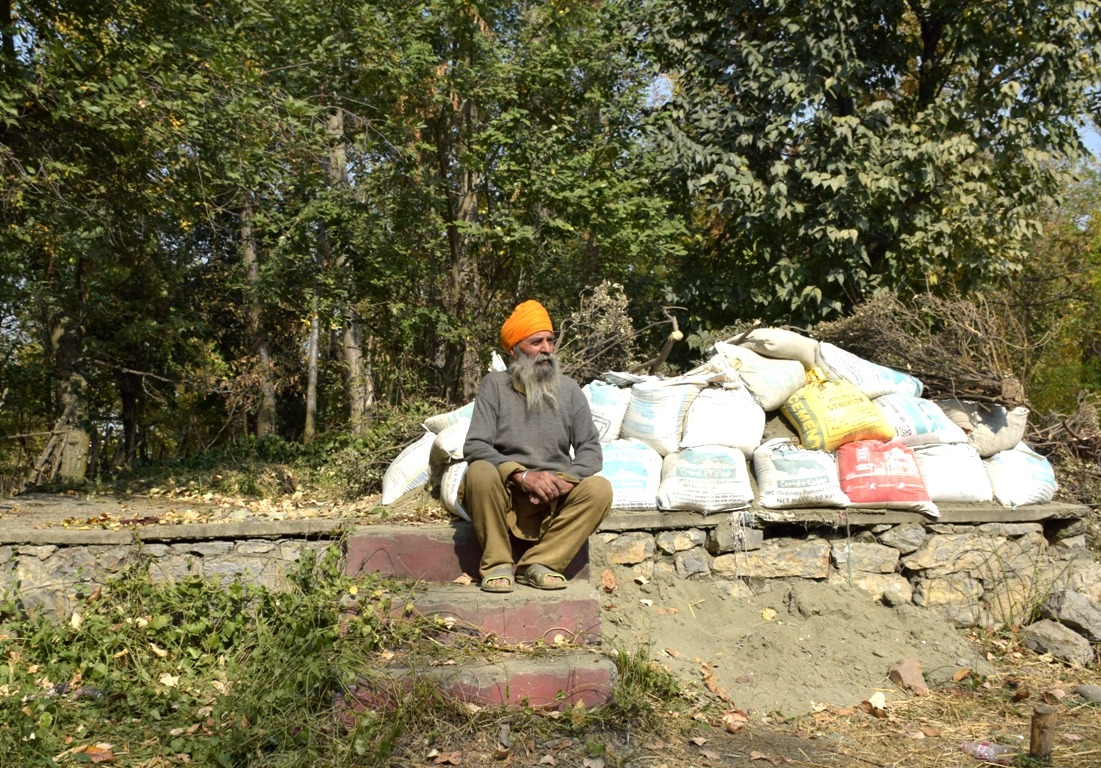
Mastana Singh. (FPK Photo/Muneem Farooq Itoo)
“Wo sabhi issi gaon mein thehrey they (All of them were staying here),” the octogenarian Sarpanch recalls the events of Oct 1947 with rapt clarity when uprooted Sikhs from Muzaffarabad and adjoining areas began moving to Mashriq.
Atuna began receiving that historic footfall soon after over 5,000 armed Afridis entered Kashmir and seized Muzaffarabad, Domel and Uri and surged towards Srinagar on Oct 22, 1947.
“I recall the grim atmosphere,” writes Dr Karan Singh, in his autobiography, Heir Apparent, “…we were losing control of the outer areas.” When the last prince was watching his empire’s steady fall, his father Hari Singh’s exit had created an anarchic setup in Kashmir — perhaps paving way for the larger crisis.
At Jammu, the mood had long turned murderous. On Mohammad Ali Jinnah’s advice, the Jammu Muslims—whose leaders had been languishing in jails since 1946—were exercising caution. But when the Sangh goons began butchering Muslims, thousands of them boarded buses to Pakistan at Gomut in Jammu.
But instead of Sialkot, the busloads reached Samba, where thousands of Muslims were exterminated. Amid this bloodbath, some 5 lakh Muslims fled to the newly born nation.
The carnage changed the regional population and made it a Hindu Majority from a Muslim majority in a matter of seven days. After failing to bring them home, years later, the state government passed a Resettlement Bill in 1982 to bring back the Muslim migrants. But the move was blocked by the Indian Supreme Court.
Amid the Jammu massacre, the last monarch asked for immediate military assistance. Before Delhi could send the airlifted army, Baramulla had fallen to the Pakistani Afridis on Oct 26, 1947.
At Atuna, Mastana Singh takes a tour of his village, pointing to the places, which bore the brunt of 1947. The headman sits on the “war memorial” — a gutted mansion, crowded with Sikh refuges on that late Oct 1947 day when the battle began.
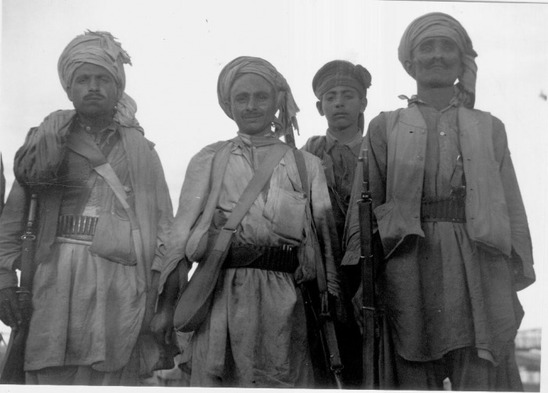
But before the Afridis would arrive in Atuna on their way to take over the Srinagar Airport, they had faced a stiff resistance at Ichhama, a Sikh village in Tangmarg.
Then on Srinagar’s streets, the National Conference volunteers would parade with ‘wooden guns’ and chant defiant slogans in a bid to boost their morale.
At Delhi’s Safdarjung Airport, the warplanes had finally begun ferrying rations and troops of the Sikh regiment led by Lt Col Ranjit Rai. They shortly succeeded in establishing a bridgehead on the Baramula-Srinagar road.
The Afridis took an alternate route towards Tangmarg. But the Sikh front at Ichamma had blocked their path. Soon after breaking the resistance at Ichamma by early hours of October 31, Afridis moved towards Atuna.
“Atuna was their natural route to reach Srinagar Airfield,” Mastana says. “But the same Mashriq—East—route was natural way for Sikhs from Bhimber, Muzaffarabad and others to take a refuge.”
But hardly anyone of them—the Sikh refugees—were expecting that they would be shortly drawn into a historic battle between irregulars.
“Most of those refugees were sulking because they were uprooted from their ancestral lands,” Mastana, then 10-year-old, recalls.
Then Atuna had a reputation of housing some state-employed bomb makers. As the word spread—Ichamma has fallen to tribals—those bomb makers, “in self defence”, began making explosives. But that fall, something else had come to Atuna, making it clear how the Dogra regime wanted to pit civilians against the armed Afridis.
“Suddenly Hari Singh’s regime began sending guns to Atuna in a bid to arm the infuriated Sikh refugees,” Mastana says.
Finally when the Pakistani Afridis arrived to wage their last battle of irregulars on Kashmir’s soil, one Mohammad Khan, a Bombay baddy walked in Atuna with a message: Some Sikh leaders want to see the armed Sikhs of this village at Doodpathri.
“Actually Khan wanted to keep the village gunners away, only to give safe passage to the marching Afridis,” Mastana says. “But later as they arrived, the armed fight somehow broke out.”
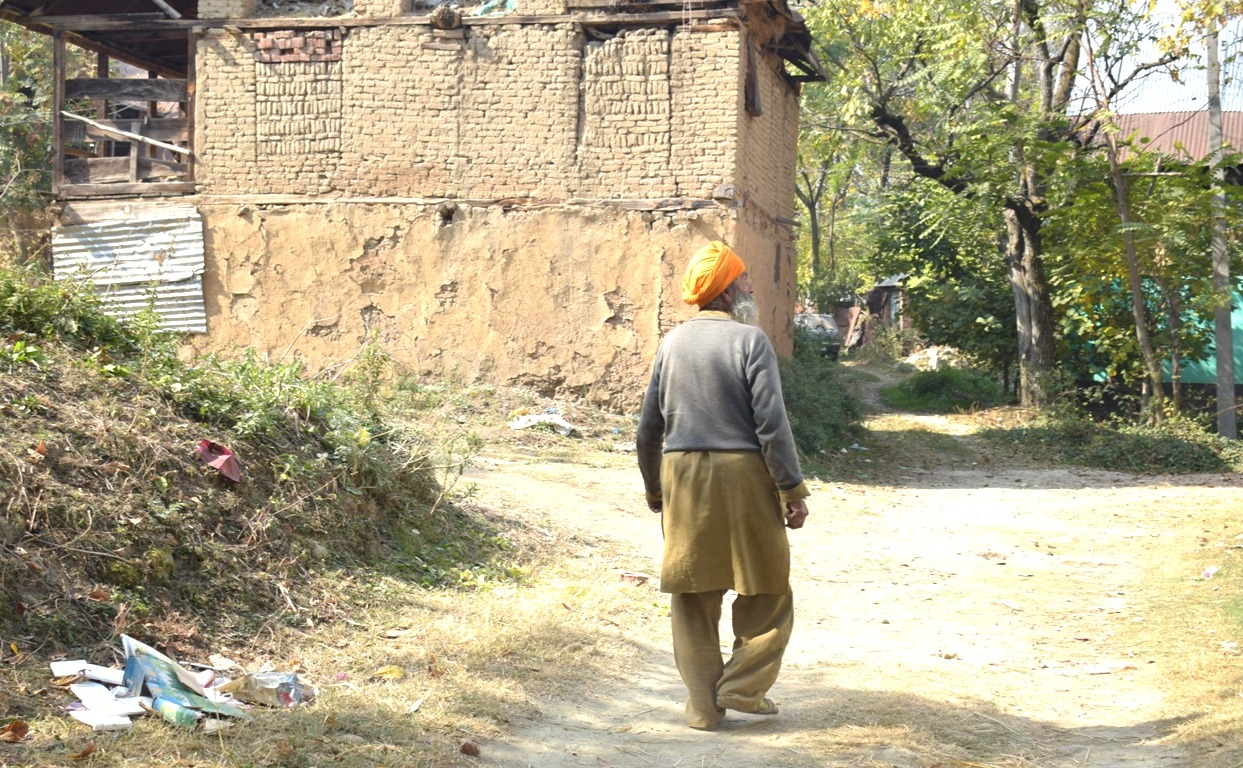
FPK Photo/Muneem Farooq Itoo
As guns began to rattle the idyllic Atuna, a Sikh granny was found shot dead on a pastoral land. It inflamed the tempers. The armed Sikh refugees put up a fight, while the local Sikhs hid themselves in the deepest corners of their houses.
That twilight as the last gun fell silent in Atuna, some 85 Sikh families started moving out of the village. Upon reaching a hilltop, as Mastana turned back, he saw his house—and that of his tribe’s—rising up in flames.
“The moment we reached the main Budgam town, we were comforted by Muslims who fed us cooked rice,” he says.
But the Atuna combat that lasted for over some hours changed the game for Afridis in Kashmir. The delay gave enough time to Indian forces to takeover the Srinagar Airfield.
After Atuna as 700 tribals fanned out in periphery of the Airfield on Nov 3, 1947, the battle of Budgam broke out where the advancing Afridis were pushed back. “The enemy are only 50 yards from us,” the dying Major Som Nath Sharma sent his last message to his Brigade Hqrs. “We are heavily outnumbered. We are under devastating fire.”
Next day when Mastana and his migrated clan reached the airfield turned war-turf, they were speedily flown to Delhi where the unfolding partition scenes greeted them.
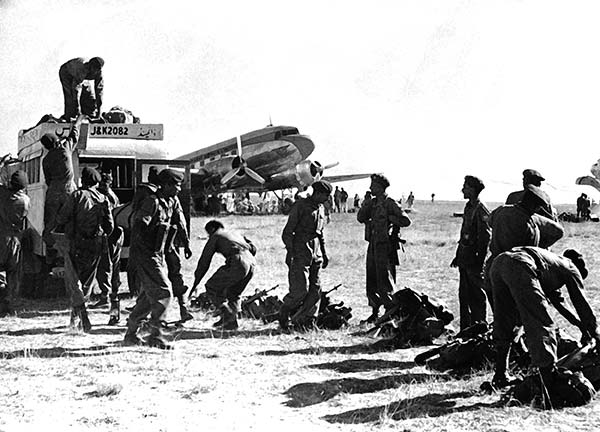
“One day my father spotted a Muslim girl hiding inside a ration ghat in Delhi,” Mastana says. “He didn’t tell anyone about her because he knew the possible fate of that petrified girl.” Eventually she was found by a local Hindu group, who took her away. Even today, Mastana feels for the poor soul. “Those were the tragic times,” he says. “Everyone was running for their lives.”
After spending some 12 months inside refugee camps in Delhi, the Kashmiri Sikhs received a word from the Sheikh Mohammad Abdullah government. Abdullah had sent a special message for them: “Come home. We are nothing without you.”
Shortly, they were ferried back to the Valley in army pickup trucks and left in Gogjibagh. “Then came Sheikh Abdullah,” Mastana says. “He wept over our plight and gave Rs 250 as financial assistance to each Sikh family.”
His family lived in Rambagh till 1956 before they returned to their homes. Once they stepped back, Mastana says, their properties—although half burnt—were safe and secure. Unlike what happened at Jammu, no Urdu Bazaar became Rajindra Bazaar in Atuna and no Islamia School became Hari Singh High School.
Today Atuna is calm again, bereft of any tensions in the region resounding with Azaadi cries.
In contrast, not many tears were shed over the 2.3 lakh massacred Jammu Muslims. Despite what author Saeed Naqvi says “the holocaust in Jammu”, the skulduggery of the authorities still prevails.
Even after 70 falls, some 5 lakh Jammu Muslims are yet to come home. Other than present day lawmakers, the Gujjar leaders are equally silent over the massacre that simply put the humanity to shame.
Free Press Kashmir is now on Telegram. Click here to Join.
FPK Android App for 2G. Click here to Download.



